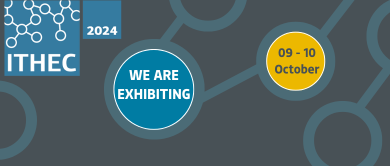High EMC shielding attenuation with fibre-reinforced plastics
Whether in the automotive, aircraft, electronics or communications technology sectors, modern electronics are increasingly finding their way into technical devices. However, the electromagnetic compatibility (EMC) of electrical systems for a wide range of future technologies is less and less guaranteed with conventional interference suppression materials.
Mechanical properties are not only determined by the choice of textile reinforcement. A suitable material can be created according to the given requirements by a targeted configuration of the reinforcing fibre content and the type of reinforcing fibre (e.g. glass fibre or carbon fibre).
The material developed, which is based on a hybrid nonwoven made of carbon and polymer fibres, has achieved very good EMC material measurements in standardised tests, with a shielding attenuation of almost 100 dB. Combined with the good mechanical properties of the material, the user gets a lighter and stronger enclosure than, for example, a metal enclosure. In addition, additives can be added to ensure the long-term conductivity of the plastic.
The new FRP material therefore has great potential in the automotive (e-mobility), electronics, EMC, communications and aerospace sectors.
Dr. Erik Wächtler (Cetex) will give a presentation on 'Outstanding electromagnetic shielding properties of a carbon fibre reinforced thermoplastic' on 09.10.2024 from 16:45 - 17:10 (Session 'Novel Product & Process Technologies (EM1)', Borgward Saal).
Programme link: ithec.de/conference/programme-2024/
Safe hydrogen pressure vessels in vehicles
Filled hydrogen containers are subject to very high pressures of approx. 700 bar and must therefore meet the highest safety requirements in the container and its carrier systems. These carrier systems also serve to protect the tanks and are highly safety-relevant components.
This aspect was addressed in the joint SmartHydro project, in which Cetex and LSE Lightweight Engineering GmbH, among others, were involved. The focus was on the automated integration of embroidered sensors into lightweight materials in order to monitor various parameters of the tank carrier system during operation. If the component is damaged while driving, the sensors can send feedback to the on-board systems. This will alert the driver to potential risks such as overheating or overloading of the carrier system of the hydrogen pressure vessel at an early stage.
Cetex developed the functional model. Based on the load requirements, the design of the semi-finished product and the manufacturing technology were developed, along with the design of the functional model. In addition, the fibre-plastic composite material was validated and a quality assurance concept developed.
The sub-area of sensor technology and evaluation electronics was processed by LSE – Lightweight Structures Engineering GmbH. After defining the sensor system, the specialists produced two sensor systems for strain monitoring of the clamping belt and structural and temperature monitoring of the component using the tailored fibre placement process.
Together with Ficker Gebr. GmbH Formen- und Werkzeugbau and TISORA Sondermaschinen GmbH, the team developed a technology for the fully automated large-scale production of tank carrier systems made of fibre-reinforced plastic (FRP) for hydrogen-powered vehicles as part of the WIR! alliance SmartERZ – Smart Composites Erzgebirge.
We look forward to your visit at our booth D32!
contact person
Dipl.-Wi.-Ing. Sebastian Nendel
Managing Director
+49 (0)371 5277-200
Contact by mail

